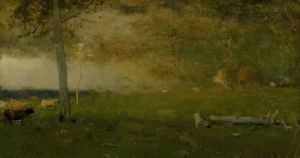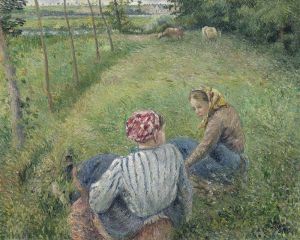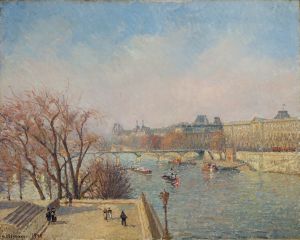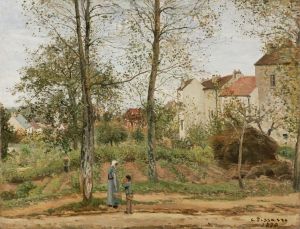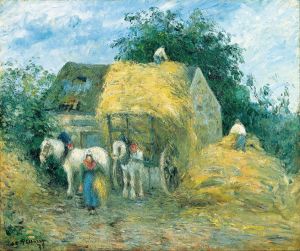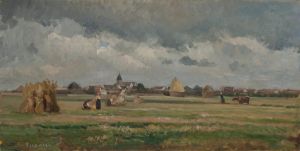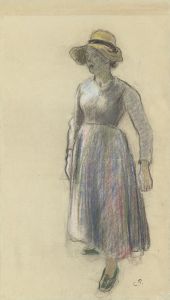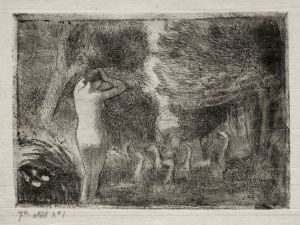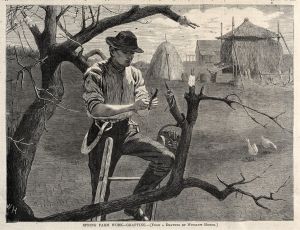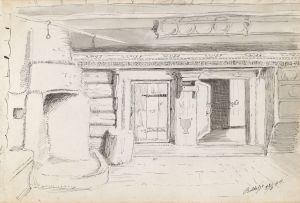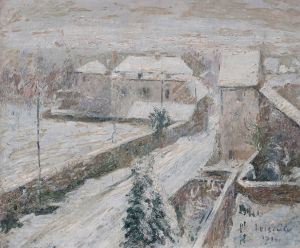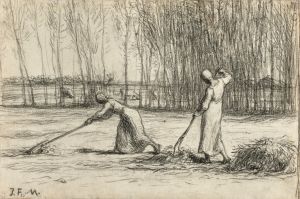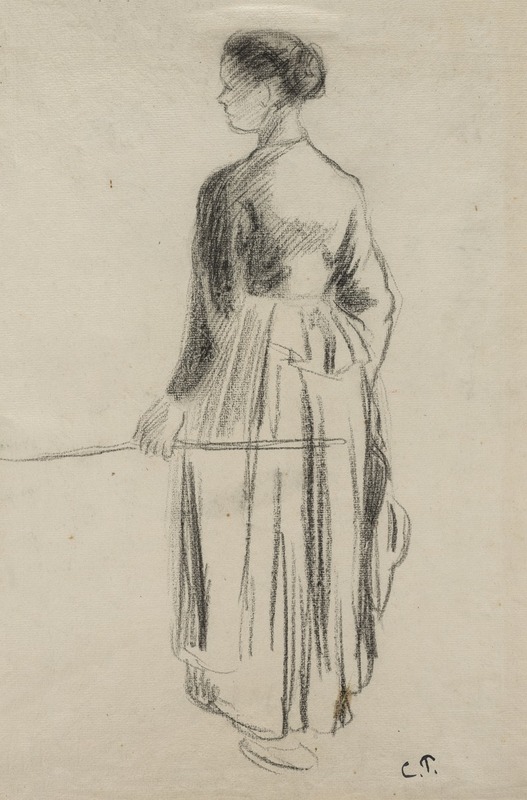
The Cowherdess, Eragny
A hand-painted replica of Camille Pissarro’s masterpiece The Cowherdess, Eragny, meticulously crafted by professional artists to capture the true essence of the original. Each piece is created with museum-quality canvas and rare mineral pigments, carefully painted by experienced artists with delicate brushstrokes and rich, layered colors to perfectly recreate the texture of the original artwork. Unlike machine-printed reproductions, this hand-painted version brings the painting to life, infused with the artist’s emotions and skill in every stroke. Whether for personal collection or home decoration, it instantly elevates the artistic atmosphere of any space.
"The Cowherdess, Eragny" is a painting by the renowned French artist Camille Pissarro, completed in 1887. Pissarro, a pivotal figure in the Impressionist movement, is celebrated for his contributions to both Impressionism and Post-Impressionism. His work often depicted rural and urban scenes, capturing the essence of everyday life with a focus on light and atmosphere.
This particular painting, "The Cowherdess, Eragny," is an exemplary piece that showcases Pissarro's fascination with rural life and his adept skill in portraying the natural world. The painting depicts a serene rural scene in the village of Éragny-sur-Epte, where Pissarro lived from 1884 until his death in 1903. Éragny, located in the Normandy region of France, provided Pissarro with abundant inspiration due to its picturesque landscapes and pastoral settings.
In "The Cowherdess, Eragny," Pissarro captures a moment of tranquility as a young cowherdess tends to her cattle. The composition is characterized by its harmonious blend of colors and the soft, diffused light that bathes the scene. Pissarro's brushwork is loose and fluid, a hallmark of his Impressionist style, allowing him to convey the movement of light and the gentle rustling of leaves and grass.
The painting reflects Pissarro's interest in the lives of rural workers and his commitment to depicting them with dignity and respect. The cowherdess, central to the composition, is portrayed with a sense of calm and purpose, embodying the simplicity and beauty of rural life. Pissarro's choice of subject matter aligns with his broader artistic philosophy, which often focused on the depiction of ordinary people and their connection to the land.
Pissarro's use of color in "The Cowherdess, Eragny" is particularly noteworthy. He employs a palette of greens, blues, and earthy tones to create a sense of depth and atmosphere. The interplay of light and shadow is masterfully rendered, highlighting Pissarro's keen observational skills and his ability to capture the ephemeral qualities of nature.
"The Cowherdess, Eragny" is also significant in the context of Pissarro's artistic evolution. During the late 1880s, Pissarro began to experiment with techniques that would later influence the Post-Impressionist movement. While maintaining his Impressionist roots, he explored new approaches to composition and color, paving the way for future developments in modern art.
This painting is housed in the National Gallery of Art in Washington, D.C., where it continues to be appreciated by art enthusiasts and scholars alike. It remains an important work within Pissarro's oeuvre, exemplifying his mastery of landscape painting and his enduring interest in the rural world.
In summary, "The Cowherdess, Eragny" by Camille Pissarro is a quintessential example of the artist's ability to capture the beauty and simplicity of rural life. Through his Impressionist technique and thoughtful composition, Pissarro invites viewers to appreciate the quiet dignity of the cowherdess and the natural world she inhabits.






